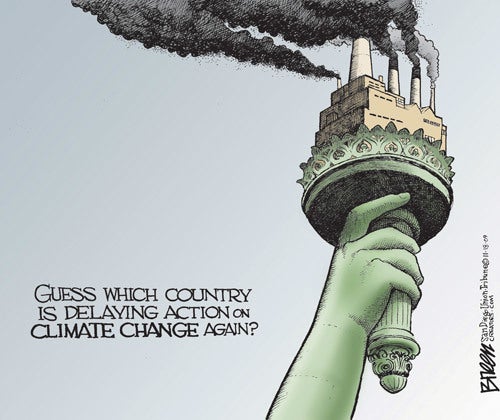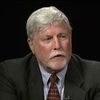While suspense continues over U.S. involvement in the Paris climate agreement, there is a dimension to the issue that President Trump’s deadlocked advisors should consider: The rest of the world many not want the United States at the table.
I have just returned from a meeting in Rome where I was the only American among two dozen climate-action advocates from Australia, Morocco, Germany, Italy and several other countries. The topic was how to accelerate the international effort to avoid catastrophic climate change.
As it turned out, the conversation was dominated by Trump’s upcoming decision on whether the United States will withdraw from the Paris deal. Everyone who expressed an opinion believed that Trump’s purge of President Obama’s climate policies has left the United States with little to contribute. In fact, in view of Trump’s denial that climate change is real, they suspect that the United States would be the skunk at the Paris party, slowing or even obstructing progress. Yet the international effort to confront climate change, still insufficient, is unlikely to succeed without the participation of the world’s second-largest carbon polluter.

There is a solution to this dilemma. It would tolerate Trump’s climate denial while still providing a meaningful contribution to the Paris accord. It would require no federal mandates, no expansion of the federal bureaucracy, and no new federal spending. It would support state rights and make America’s commitment to climate action come from the bottom-up rather than the top-down. The path forward looks like this:
First, Trump would decide that despite his personal feelings about climate change, it is in the best interests of the country to remain a constructive party to the Paris agreement. This would comply with the guidance the president has received from many corporate, state and local leaders, as well as the wishes of the large majority of the American people.
Second, the President would explain that he still does not support the top-down approach of federal mandates and regulations. Instead, he would allow his administration to be an honest broker for the energy and climate commitments made by states, localities and U.S. corporations.
The president would encourage states, cities and businesses to submit their voluntary, non-binding commitments on reducing and sequestering greenhouse gas emissions to the Environmental Protection Agency. EPA would aggregate them and calculate their anticipated impact on national emissions.
Next, EPA would combine these commitments with any federal mitigation measures that are upheld by the courts or approved by Congress. The result would be the United States’ non-binding commitment to the international community under the terms of the Paris accord.
Currently, while the United Nations allows states, cities and businesses to observe what nations do under the UN’s Framework Convention on Climate Change, these subnational entities do not have a seat at the negotiating table. The Trump plan would elevate the status of grassroots leadership in the United States.
In reality, whether in this Congress and White House or in the next, the federal government must have a significant role in U.S. climate action. Some necessary policies simply make most sense at the federal level. But right now, federal leadership is backsliding rapidly under Trump’s assault. Thankfully, that does not mean the United States has nothing to contribute to the international collaboration to prevent a permanent climate catastrophe.
In my next post, I’ll explain why I think states, cities and businesses would rally to this approach.
